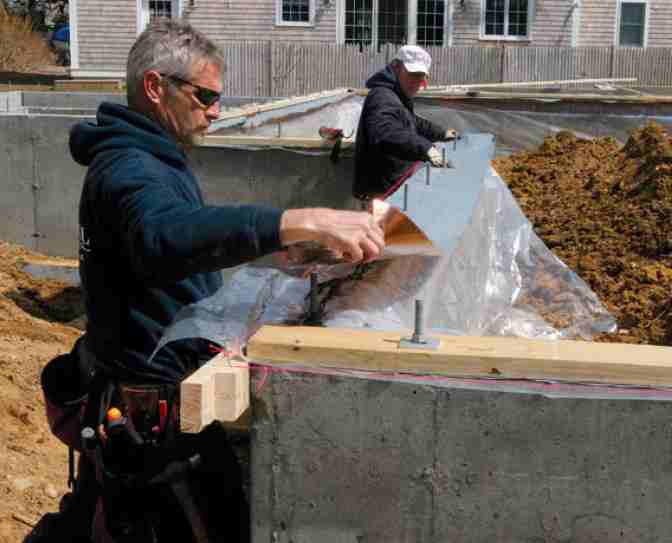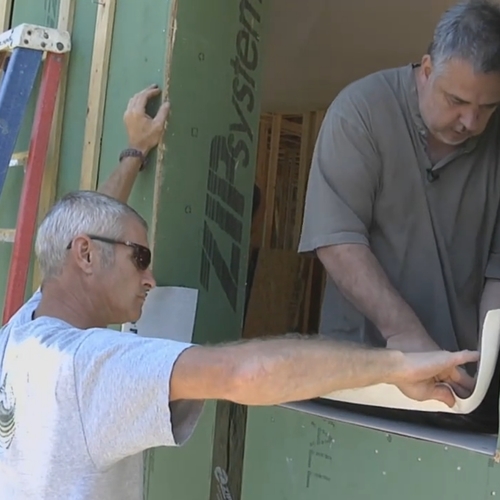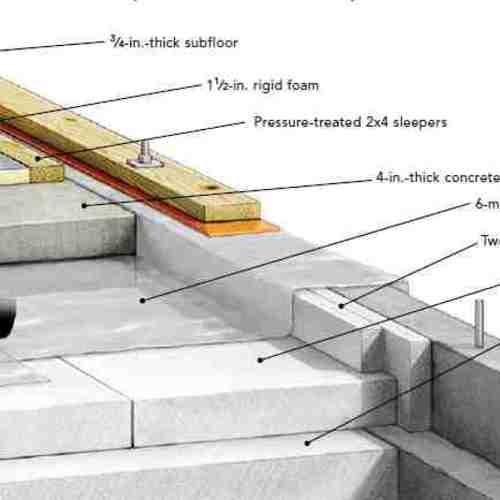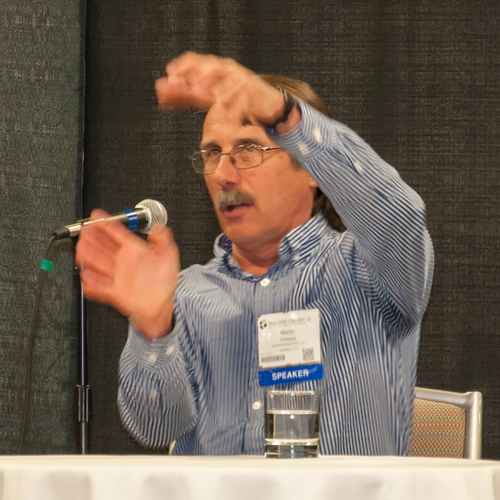
Image Credit: Fine Homebuilding
At the Passive House job site in Falmouth, Massachusetts, architect Steve Baczek specified a mudsill gasket.
But to make sure that the gap between the top of the foundation and the sill plate didn’t leak, Baczek took a belt-and-suspenders approach by also specifying the use of Tremco acoustical sealant. Sold in tubes at specialty retailers and online, the black sealant installs easily with a caulk gun. It’s exceedingly sticky and highly elastic, and unlike construction adhesive, it never cures.
Subscribe to GBA to enjoy all of the benefits of GBA Pro membership
GBA Pro members have access to all of the videos in the Passive House video series.
To enjoy the benefits of GBA Pro membership, subscribe to GBA Pro today or try our 14-day free trial.
Here is the link to the “Airtight Mudsills” video.
To see Episode One of the series, click here: “Passive House Design.” (The first episode is available to all GBA readers, including non-members.)
Weekly Newsletter
Get building science and energy efficiency advice, plus special offers, in your inbox.














4 Comments
Hi Steve:
I ended up building cape in Chatham, and used the same approach as in the video you presented. I did end up with 8-12" of poly underneath the sill on the exterior of house. Is this something that should simply be trimmed off or did you incorporate some type of a finish with this extra poly on the outside?
Steve Kreisher,
I'm not sure whether Steve Baczek will answer. In the meantime, here's my advice: Trim away the protruding polyethylene with a utility knife.
https://www.tremcosealants.com/markets/commercial/sealants-adhesives/specialty-sealants/acoustical-curtainwall-sealant/ Is this the Tremco acoustical sealant everyone uses? Acoustical Curtainwall?
It is, but it stinks and is full of nasty ingredients. This is an almost-zero VOC product that performs similarly: https://foursevenfive.com/contega-hf/.
Log in or create an account to post a comment.
Sign up Log in